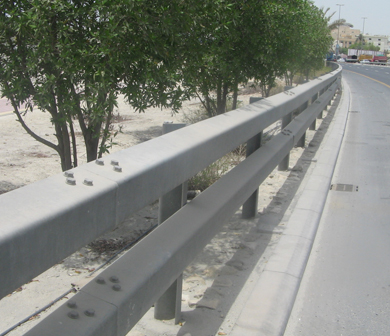

They are designed to redirect the vehicle and have a lower severity than the roadside hazard they protect. There are three main types of safety barrier.
Flexible barriers, are made from wire rope supported between frangible posts. Flexible barriers may be the best option for minimizing injuries to vehicle occupants, however they may pose a risk to motorcyclists.
Semi-rigid barriers are usually made from steel beams or rails. These deflect less than flexible barriers and so they can be located closer to the hazard when space is limited. Depending on the impact these barriers may be able to redirect secondary impacts.
Rigid barriers are usually made of concrete and do not deflect. Rigid barriers should be used only where there is no room for deflection of a semi-rigid or flexible barrier. Rigid barriers are often utilized at high volume roadwork sites to protect road workers or other road users particularly where another barrier type is awaiting repair.
We built safety barrier only if the existing hazard is removed. We double check the end points of barriers whether it is properly designed, constructed and maintained.
Safety barriers, allow space for vehicles to pull off the traffic lane. We make sure that the safety benefits of barriers are repaired properly. We ensure appropriate clearance behind safety barrier which is considered particularly for flexible and semi-rigid barriers.
BS(British Standard) standard and as per MOW(Ministry of Work) standard Bahrain.
